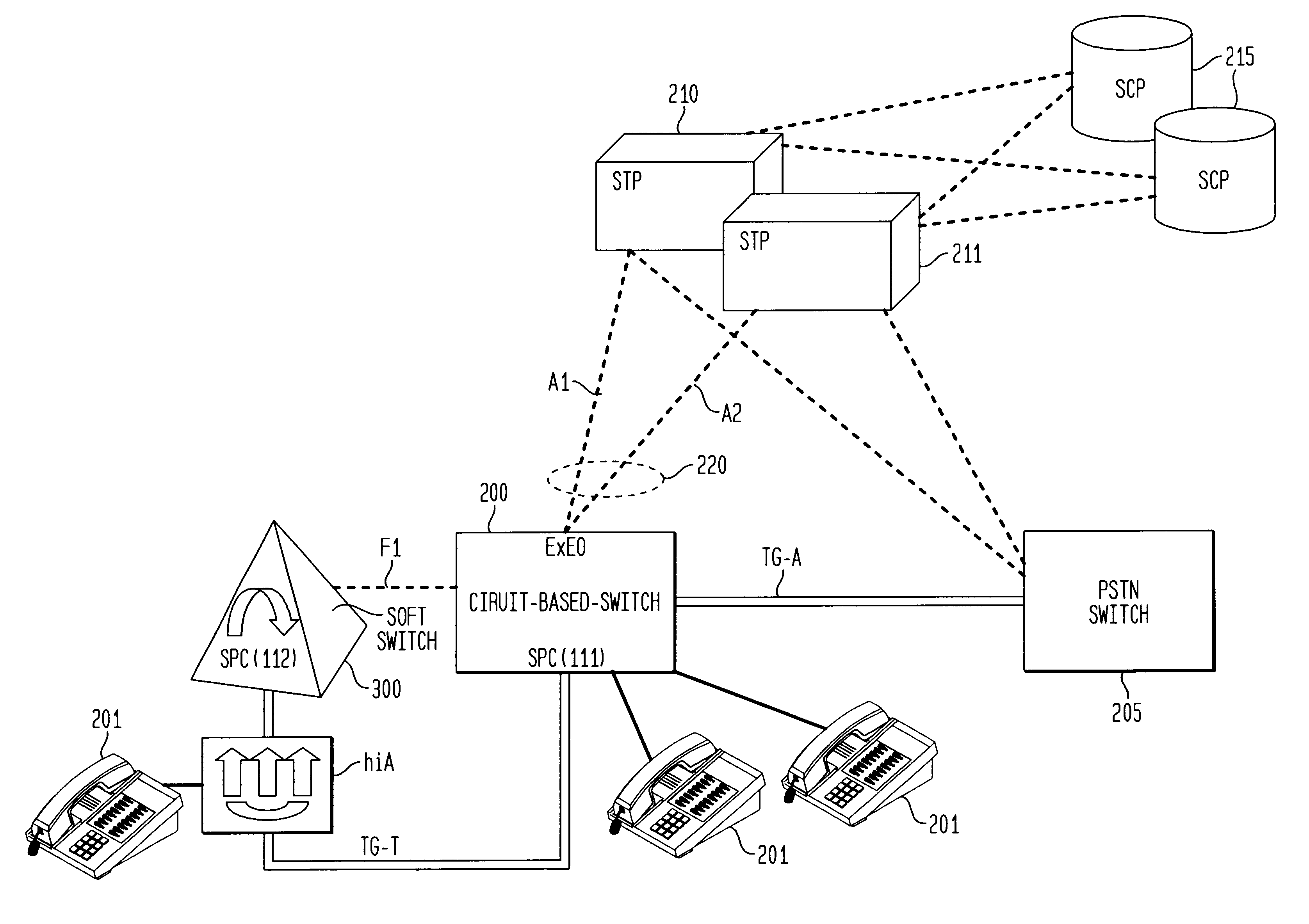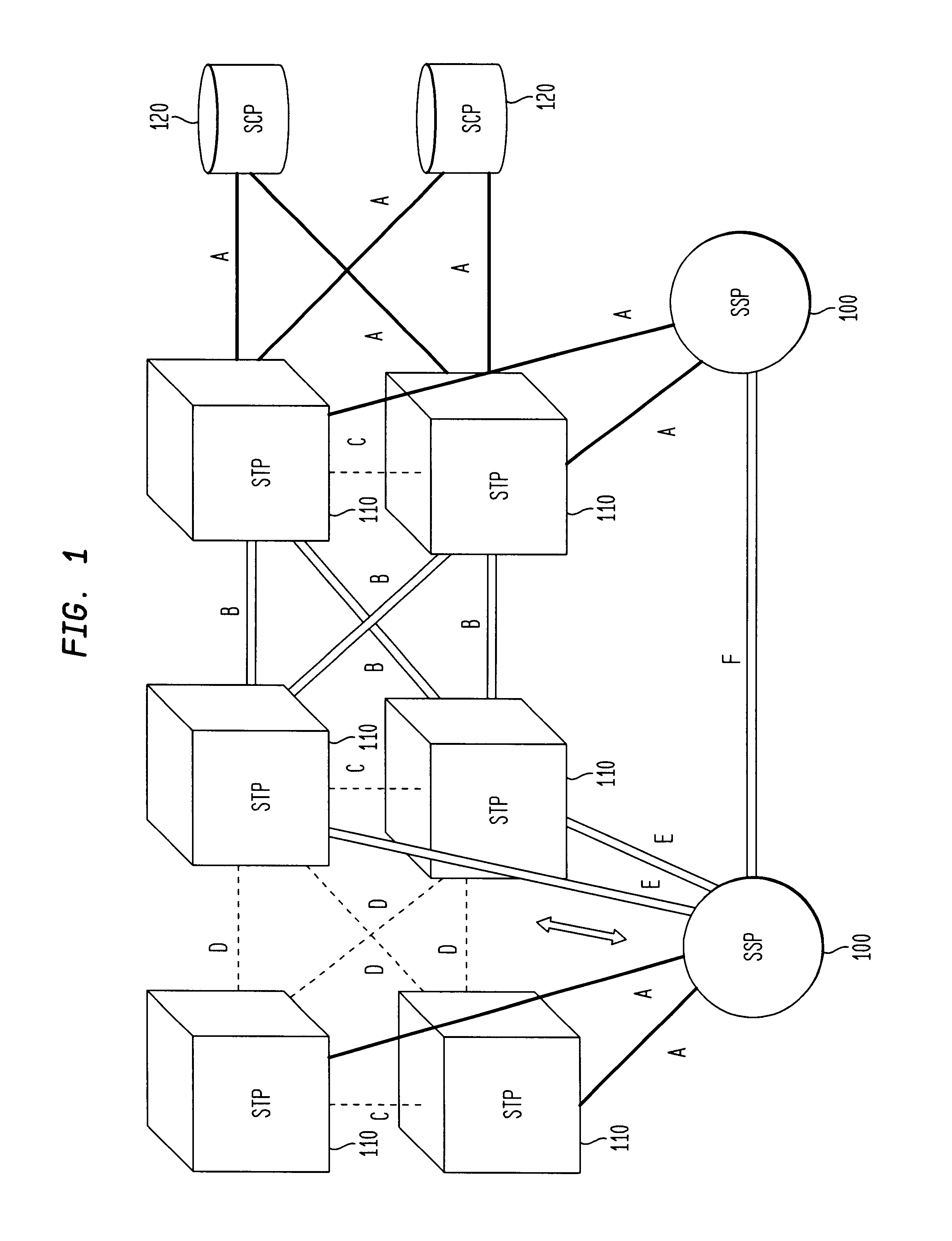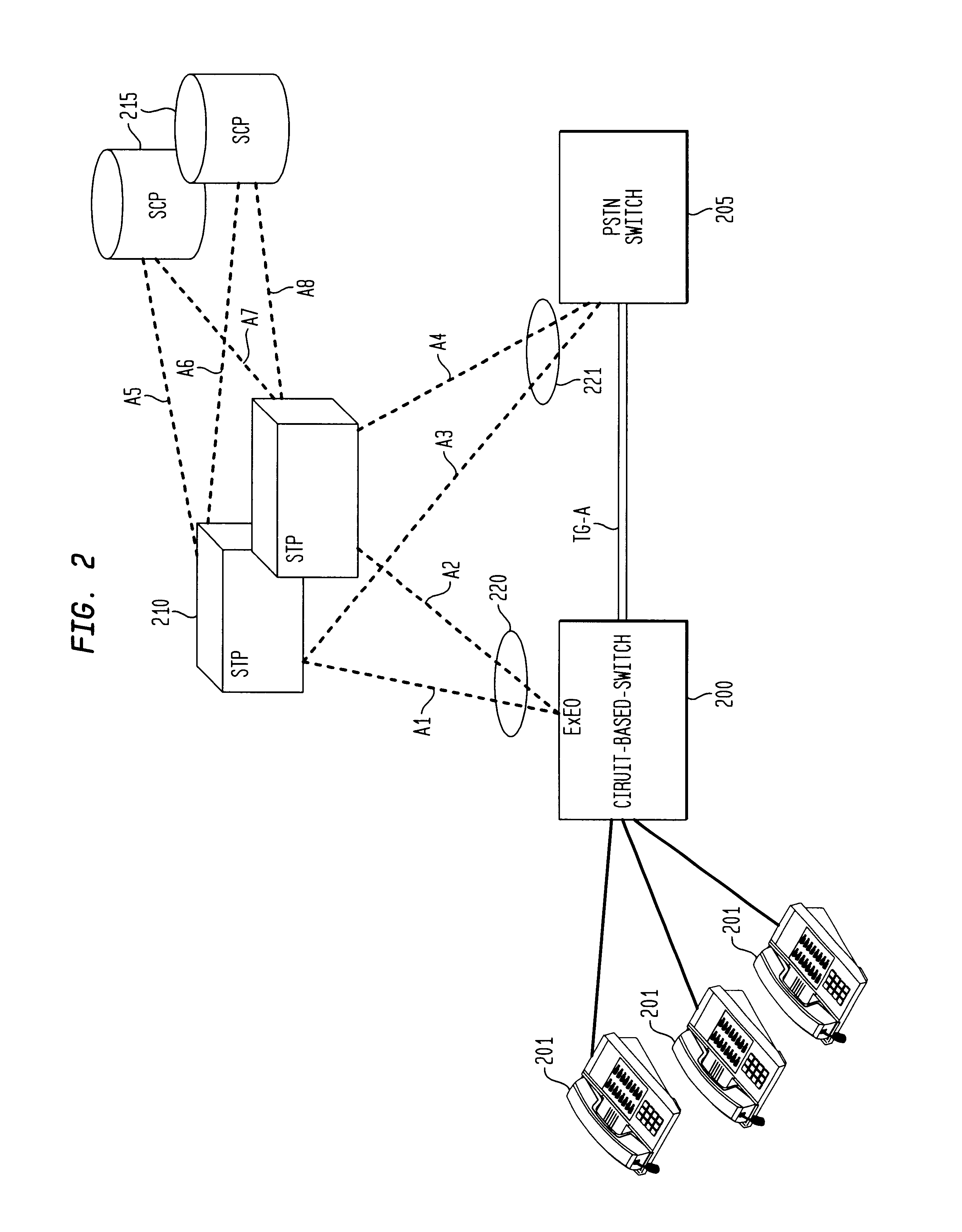Method and apparatus for sharing point codes in a network
a point code and network technology, applied in the field of telecommunications, can solve the problems of achieving capacity constraints and throughput limitations quickly, unable to meet the requirements of a new spc, and achieving easy exhaustion of limits
- Summary
- Abstract
- Description
- Claims
- Application Information
AI Technical Summary
Benefits of technology
Problems solved by technology
Method used
Image
Examples
Embodiment Construction
Common Channel Signaling System No. 7 (SS7) is a global standard for telecommunications defined by the International Telecommunications Union (ITU). The standards defines procedures and protocols by which network elements in a SS7 network public switched network (PSTN) exchange information over digital signaling networks SS7 messages are exchanged over 56 or 64 kilobit per second bidirectional channels known as signaling links.
Each signaling point in the SS7 network is uniquely defined by a numeric point code. Each signaling point uses a routing table to select the appropriate signaling path for each message. Referring to FIG. 1, there are three types of signaling points in a SS7 network, a Service Switch Point (SSP) 100, a Signaling Transfer Point (STP) 110, and a Service Control Point (SCP) 120. These SS7 concepts are well known to those skilled in the art. SSPs are switches that originate, terminate or tandem calls and are the access point for subscribers in the PSTN. An SSP may ...
PUM
 Login to View More
Login to View More Abstract
Description
Claims
Application Information
 Login to View More
Login to View More - R&D
- Intellectual Property
- Life Sciences
- Materials
- Tech Scout
- Unparalleled Data Quality
- Higher Quality Content
- 60% Fewer Hallucinations
Browse by: Latest US Patents, China's latest patents, Technical Efficacy Thesaurus, Application Domain, Technology Topic, Popular Technical Reports.
© 2025 PatSnap. All rights reserved.Legal|Privacy policy|Modern Slavery Act Transparency Statement|Sitemap|About US| Contact US: help@patsnap.com



